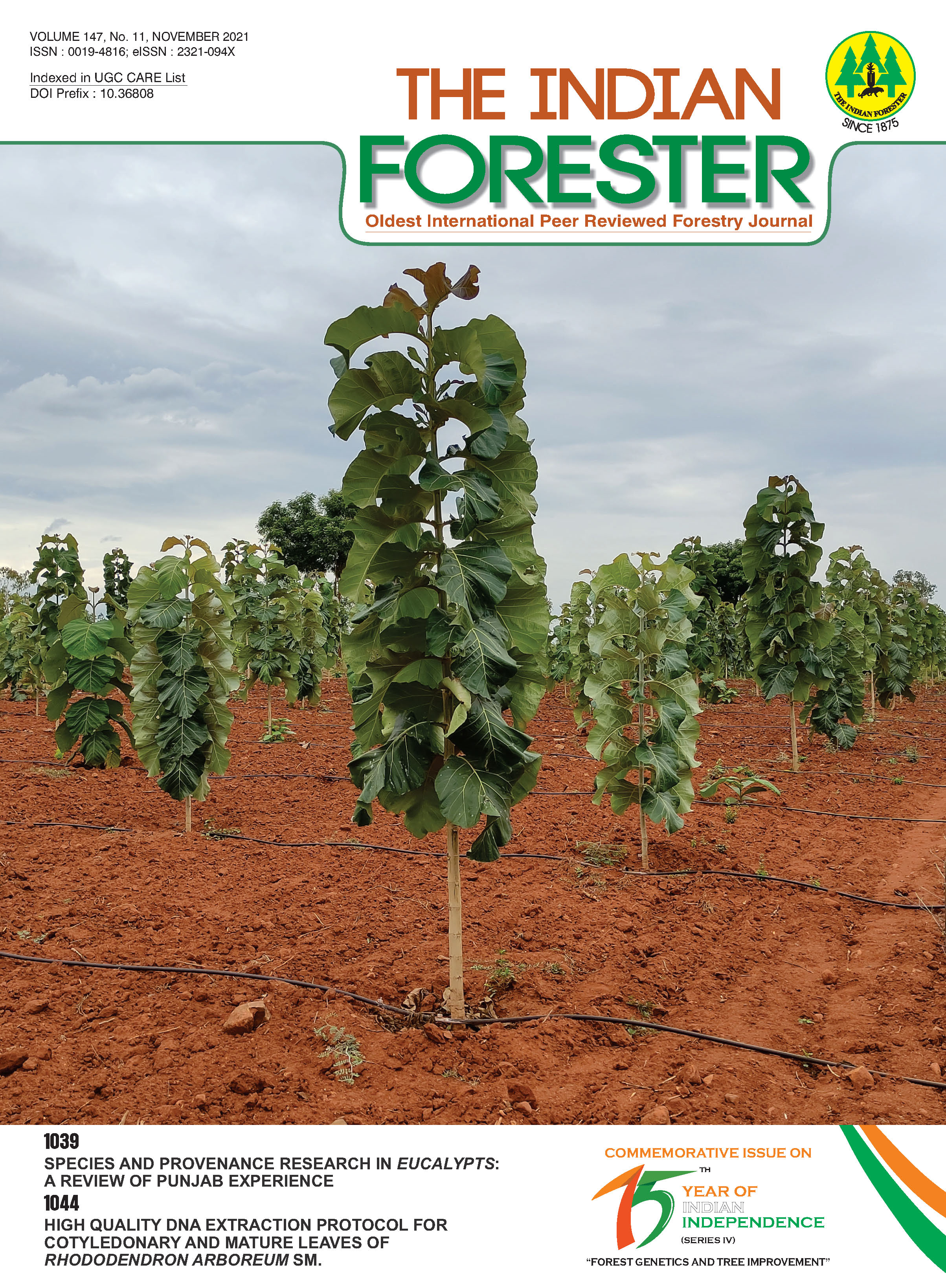In-vitro Selection of Drought Stress Tolerance in Rice (Oryza sativa L.) variety Tulasi and Sampada
DOI:
https://doi.org/10.36808/if/2021/v147i11/155025Keywords:
Drought Tolerance, PEG and Plant Tissue Culture.Abstract
In the present investigation, the tissue culture technique was used to develop drought tolerant varieties Tulasi and Sampada to a higher level of tolerance by two stage. First exposing the callus produced from the mature embryo to different concentrations of PEG (0.0, 1, 2 and 3) % and second selecting the best tolerant cells of the drought and obtaining plants from them. The plants tested with same concentrations of PEG, in normal conditions (pots) and evaluated by some indicators proline, carbohydrate, K, Na and Cl.References
Ben-Hayyim G. and U. Kalkafi and R. Ganmore-Neuman (1987). Role of Internal potassium in maintaining growth of cultured citrus cells on increasing NaCl and CaCl2 concentrations. Plant Physiol., 85: 434- 440.
Chapman H.D. and P.F. Pratt (1961). Methods of Analysis for Soil, Plants and Water. Division of Agricultural Science, University of California. USA.
Croughan T.P., S.J. Stavarek and D.W. Rains (1978). In vitro development of salt resistant plants. Environ. Exp. Bot., 21 (3/4) 317-324.
Handa S.A.T., Handa P.M., Hasegawa and R.A. Bressen. (1986). Proline accumulation and the adaptation of cultured plant cells to stress. Plat physiol., 80: 938-945.
Khare T., Kumar V. and Kishor P.B.K. (2014). Na+ and Cl− ions show additive effects under NaCl stress on induction of oxidative stress and the responsive antioxidative defense in rice. Protoplasma, 252: 1149–1165.
Lafitte H.R. and Courtois B. (2002). Interpreting cultivar × environment interactions for yield in upland rice: assigning value to drought-adaptive traits. Crop Sci., 42: 1409–1420.
Levitt J. (1980). Salt and ion stress. In: Responses of Plant to Environmental Stresses. II.PP.365-488. Academic Press, New York.
Mercado J.A., M.A. Sancho-Carrascosa, S. Jim´enez-Berm´udez, R. Per´an-Quesada, F. Pliego-Alfaro and M.A. Quesada (2000). Assessment of in vitro growth of apical stem sections and adventitious organogenesis to evaluate salinity tolerance in cultivated tomato. Plant Cell Tiss. Organ Cult., 62: 101-106.
Munns R. and M. Tester (2008). Mechanisms of salinity tolerance. Annu. Rev. Plant. Biol., 59: 651–681.
Orcutt D.M. and E.T. Nilsen (2000). The Physiology of Plants Under Stress: Soil and Biotic Factors . John Wiley & Sons, Inc.: USA.
Ranjit S.L., Manish P. and Penna S. (2015). early osmotic, antioxidant, ionic, and redox responses to salinity in leaves and roots of Indian mustard (Brassica juncea L.). Protoplasma, 253: 101–110.
Reddy S.K. and Omar h. obaid (2017). Callus induction and plant regeneration from embryo (Oryza sativa L.) Ad.plant SCI., 30(1): 29-32.
Vinay Kumar and Tushar Khare (2016). Differential growth and yield responses of salt-tolerant and susceptible rice cultivars to individual (Na+ and Cl−) and additive stress effects of NaCl, Acta Physiologiae Plantarum July, 38: 170.
Downloads
Downloads
Published
How to Cite
Issue
Section
License
Unless otherwise stated, copyright or similar rights in all materials presented on the site, including graphical images, are owned by Indian Forester.





